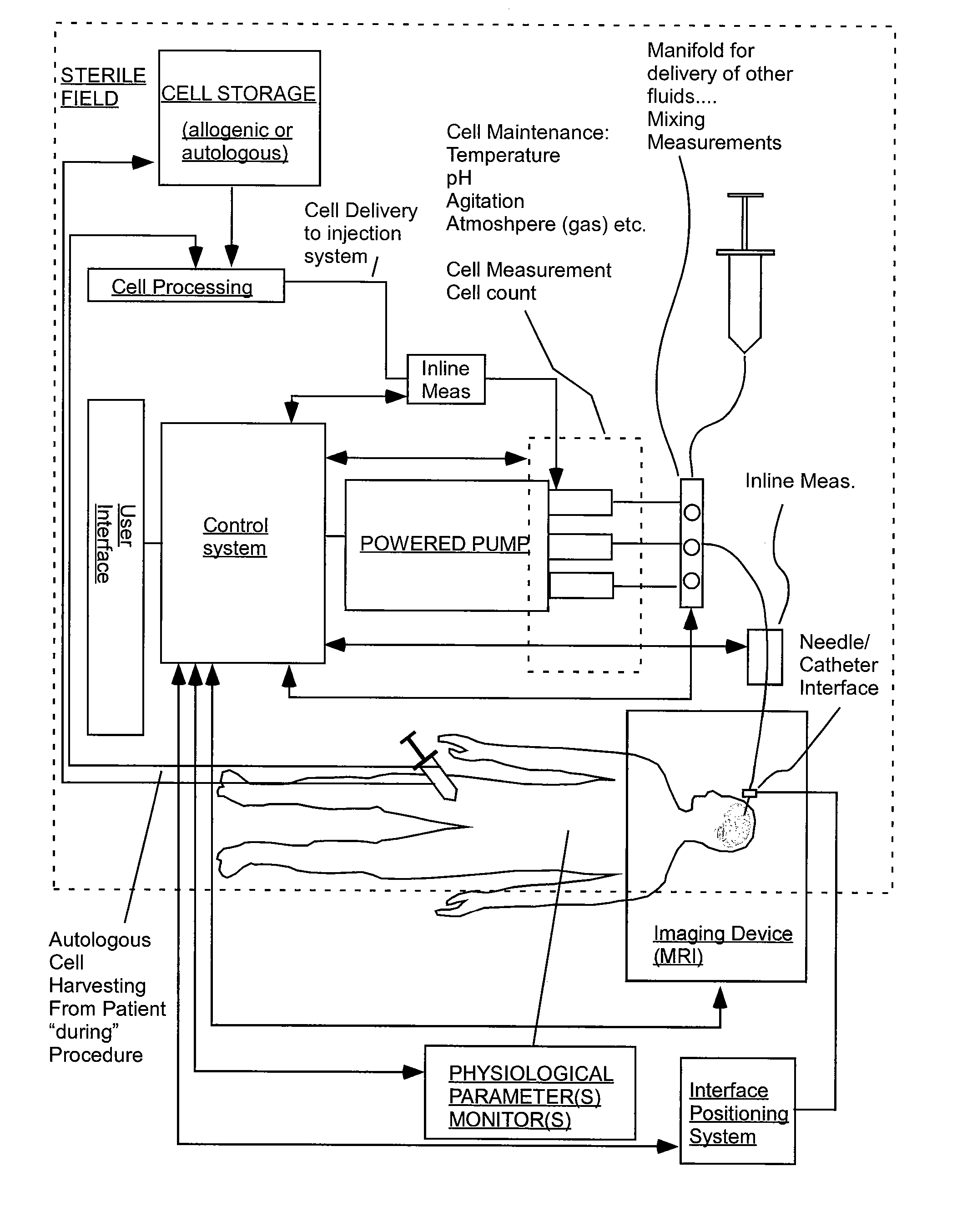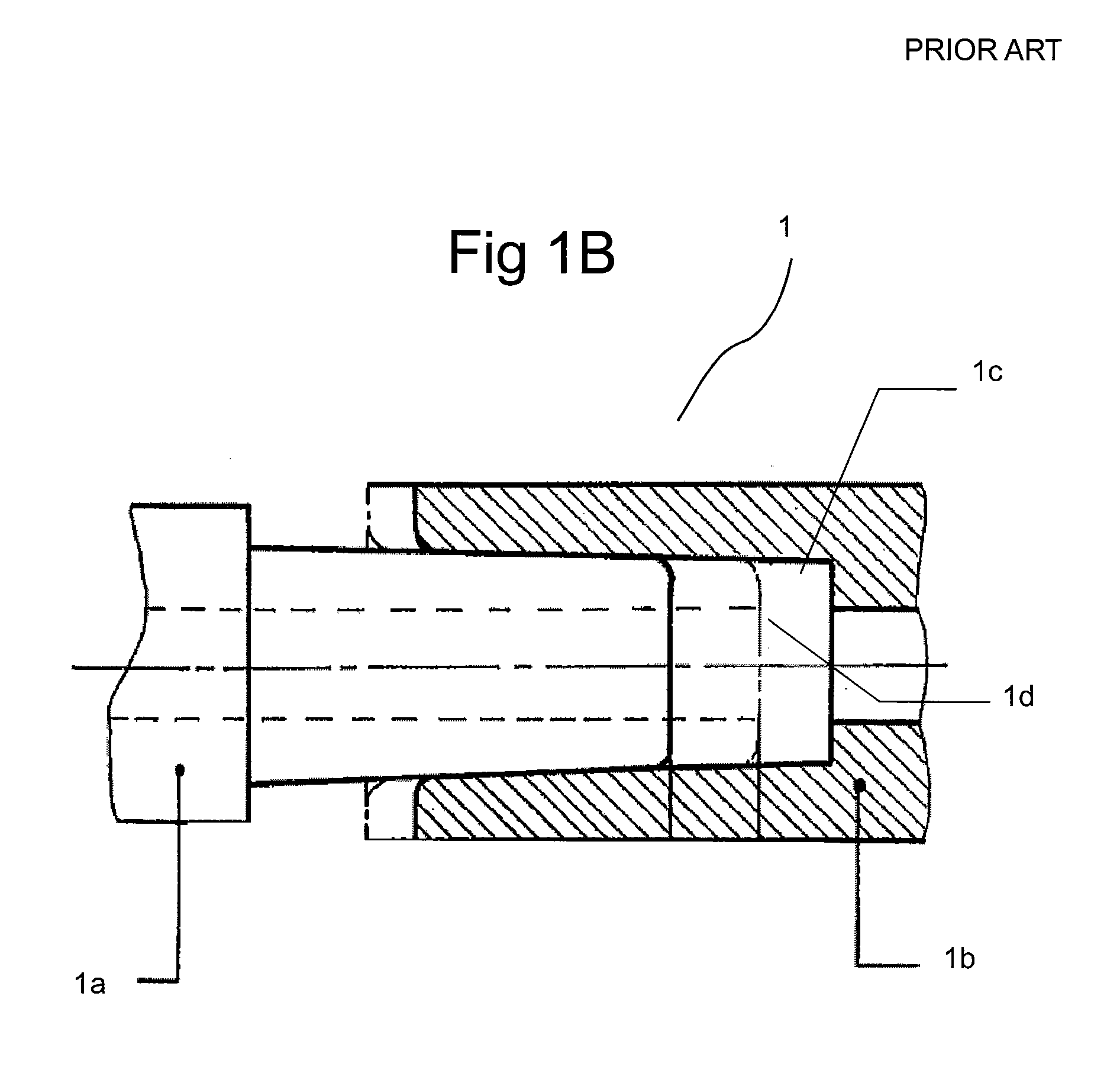Delivery of agents to tissue
a technology of tissue and agents, applied in the field of tissue delivery, can solve the problems of indeterminate amount of injectate squirting or leaking out the needle track, tissue becomes relatively hard and tense, and is presumably wasted
- Summary
- Abstract
- Description
- Claims
- Application Information
AI Technical Summary
Benefits of technology
Problems solved by technology
Method used
Image
Examples
Embodiment Construction
[0119] FIGS. 2 sets forth several embodiments of systems of the present invention for use in delivery of an injectate or injection fluid, and particularly an injection fluid containing cells, to a brain of a patient. FIG. 3 sets forth several embodiments of systems of the present invention for delivery of an injection fluid, and particularly cells, to the heart of a patient. Several embodiments of the present invention are discussed below in detail with respect to delivery of cells to the brain or external heart of a patient. However, one skilled in the art appreciates that the devices, systems and methods of the present invention can be used to deliver many different types of substances to many different tissues, internal to the body as well as to the skin. Moreover, the devices, systems and methods of the present invention are applicable to open surgery or endoscopic needle-based deliveries as well as to catheter-based deliveries.
[0120] The systems of FIGS. 2 and 3 are similar in...
PUM
| Property | Measurement | Unit |
|---|---|---|
| diameter | aaaaa | aaaaa |
| volume | aaaaa | aaaaa |
| volume | aaaaa | aaaaa |
Abstract
Description
Claims
Application Information
 Login to View More
Login to View More - R&D
- Intellectual Property
- Life Sciences
- Materials
- Tech Scout
- Unparalleled Data Quality
- Higher Quality Content
- 60% Fewer Hallucinations
Browse by: Latest US Patents, China's latest patents, Technical Efficacy Thesaurus, Application Domain, Technology Topic, Popular Technical Reports.
© 2025 PatSnap. All rights reserved.Legal|Privacy policy|Modern Slavery Act Transparency Statement|Sitemap|About US| Contact US: help@patsnap.com



